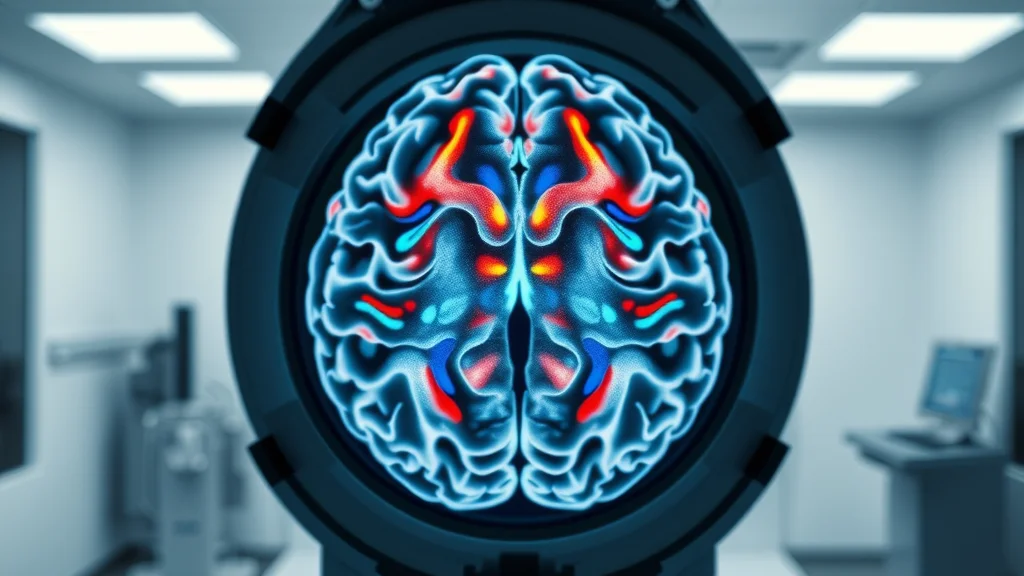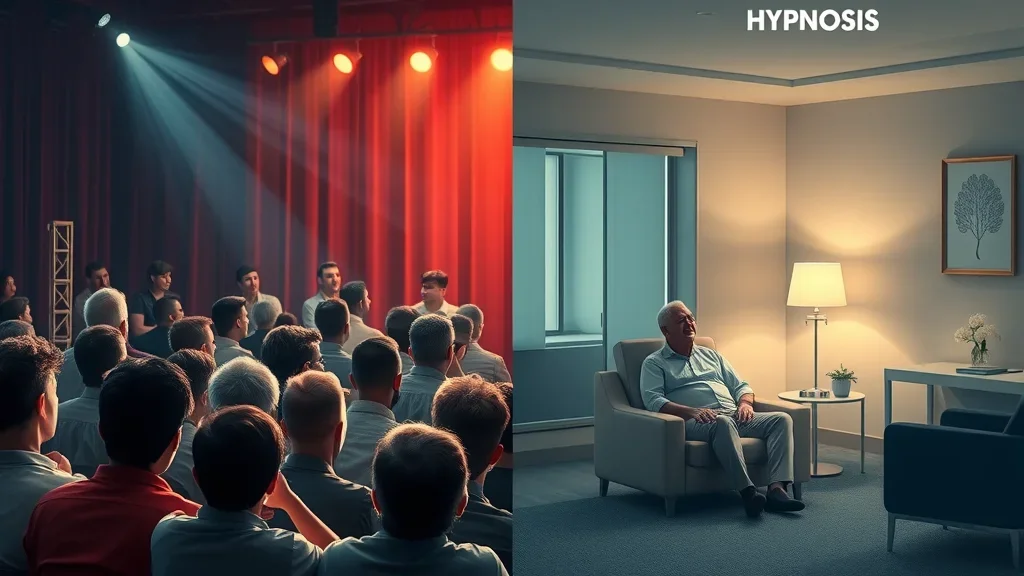Did you know that studies showed hypnosis can reduce patient pain by up to 42% in clinical settings, thanks to the powerful interplay between focus and relaxation? This surprising fact reveals just how central these two elements are in harnessing the full transformative potential of hypnosis. Whether you are seeking to manage stress, enhance mental clarity, or explore new avenues for personal growth, understanding and mastering focus and relaxation in hypnosis opens doors to a world of possibility.
Unveiling the Power of Focus and Relaxation in Hypnosis
Statistic: Research in clinical and experimental hypnosis consistently finds that individuals who easily achieve focused attention and deep relaxation respond more favorably to hypnotic suggestion—making therapy more effective for issues from pain management to anxiety or stress disorder.
“Focus and relaxation are not just prerequisites but the very foundation for entering the hypnotic state. Only by guiding the mind into calm, concentrated awareness can a practitioner unlock the incredible power of clinical hypnosis.” — Dr. Amanda Rosenthal, Certified Clinical Hypnotherapist
What You'll Learn About Focus and Relaxation in Hypnosis
The nature of the hypnotic state and how focus and relaxation are essential to it
The psychological and physiological mechanisms behind hypnosis work
Effects of clinical hypnosis using focus and relaxation techniques
Key relaxation and focus strategies for maximizing therapeutic results
Actionable steps, evidence-based insights, and how to apply them in real life
Understanding the Hypnotic State: The Role of Focus and Relaxation in Hypnosis
What Is The Hypnotic State?
The hypnotic state is a unique and altered state of consciousness characterized by focused attention and deep relaxation. Unlike sleep, you remain aware but your mind becomes more open to suggestion and positive change. In clinical hypnosis, entering this state allows a practitioner to help clients shift behaviors, manage pain, and address challenges like anxiety or stress disorder. Focus draws attention away from the external world, while relaxation quiets the mind and body—a synergy shown to quietly but powerfully reshape inner experience. Tools like breathing exercises and progressive muscle relaxation prime the mind for this receptive, transformative state.

Focus and Relaxation in the Process of Hypnosis
Scientific research in clinical and experimental hypnosis reveals that focus and relaxation are far more than surface-level experiences. When a hypnosis session begins, guided cues direct a client’s attention—known as focused attention—to a single stimulus or thought. At the same time, relaxation techniques such as progressive muscle relaxation or visualization reduce physiological arousal, lowering blood pressure and calming the nervous system. This careful orchestration facilitates a rapid transition into the hypnotic state, where the brain’s default mode network quiets and suggestibility peaks. The process is so effective that the Society of Clinical Hypnosis recommends structured induction methods specifically designed to balance these elements for each client’s needs.
For those interested in how focus and relaxation in hypnosis compare to other mind-body practices, exploring the distinctions between hypnosis and meditation can provide valuable context. Understanding the unique mechanisms and benefits of each approach can help you choose the right technique for your personal growth or therapeutic goals.
How Does Focus and Relaxation in Hypnosis Work?
Mechanisms of Focus During Hypnosis
Practitioners structure each hypnosis session around enhancing attentional absorption. This means minimizing distractions, using soothing language, and carefully choosing focal points—like a gentle voice, a swinging pendulum, or a calming visualization. Neuroscience studies using fMRI scans show that during hypnosis work, areas of the brain responsible for attention and control (such as the anterior cingulate cortex) become especially active while “mind-wandering” regions quiet down. This intense focus, or focused attention, enables the mind to become more flexible and responsive to hypnotic suggestion. Clinical hypnosis leverages this by introducing new coping behaviors, suggesting reductions in pain perception, or supporting healthy mindsets—proving that focus is not only mental but an essential part of physiological change.

Role of Relaxation in Hypnosis
Relaxation is the gateway to making suggestions “stick” during a hypnosis session. By guiding clients through relaxation techniques—such as controlled breathing, muscle relaxation, or guided imagery—practitioners activate the parasympathetic nervous system. This not only lowers blood pressure and stress hormones but also makes the mind more receptive to change. Clinical hypnosis often blends these relaxation techniques with cognitive behavioral therapy and mindfulness meditation, harnessing their combined power for issues like pain management, cancer patients’ comfort, or anxiety. Integration of deep relaxation states is what allows a practitioner to shift the client far from their usual state of consciousness, clearing the way for real progress.

Clinical Hypnosis: Merging Focus and Relaxation for Therapeutic Outcomes
“The real power of clinical hypnosis lies where intense focus and pure relaxation overlap: that's where the mind becomes open to true healing and change.” — Dr. Ethan Li, Certified Hypnotherapist and Behavioral Therapy Specialist
Evidence shows that the most successful clinical hypnosis sessions structure both focus and relaxation. The practitioner guides the client through relaxation techniques to reduce physical tension and mental chatter, then gradually sharpens their attention with hypnotic suggestion. The process can lead to impressive health improvements, whether in lowering blood pressure, reducing chronic pain, or even supporting cognitive behavioral therapy for anxiety or behavioral change. By balancing these two pillars, the session maximizes comfort, enhances the impact of therapeutic goals, and increases the client’s sense of empowerment.
Comparison of Focus vs. Relaxation Techniques Used in Clinical Hypnosis |
||
Focus Techniques |
Relaxation Techniques |
Therapeutic Use |
|---|---|---|
Directed gaze, object fixation, guided attention, affirmations, counting |
Progressive muscle relaxation, deep breathing, guided imagery, mindful meditation |
Pain management, stress disorder relief, anxiety reduction, boosting self-esteem, helping cancer patients, and more |
Conducting an Effective Hypnosis Session: Focus and Relaxation Techniques
Pre-Session Preparation and Mindset
Preparation is critical for a successful hypnosis session. Start by choosing a serene, distraction-free environment and arranging comfortable seating. Practitioners often use soft lighting, calming scents, and gentle background sounds. Mentally, both practitioner and client should set intentions for what they hope to achieve—whether it’s anxiety reduction, behavioral therapy support, or simply deeper relaxation. Take a few moments before beginning to center yourself with slow breathing exercises or mindfulness meditation. Establishing this mindset ensures that the session starts from a place of receptivity, with both focus and relaxation “primed” for the hypnotic state.

During the Hypnosis Session
The heart of the hypnosis session involves gradually deepening relaxation while ramping up focus. Practitioners may begin with progressive muscle relaxation, guiding attention to each body part and releasing tension. This is often followed by focused visualization—like picturing a peaceful place or counting backwards with the practitioner’s voice. As the client’s physiological signs (such as blood pressure and breathing) slow, the practitioner introduces hypnotic suggestion. Throughout, cues and prompts help clients stay in focused attention and deep relaxation, maintaining the optimal hypnotic state for therapeutic intervention. The balanced use of focus and relaxation makes clinical hypnosis effective for both acute and chronic mental health concerns.
Science Behind Focus and Relaxation in Hypnosis Work
Modern research in clinical and experimental hypnosis is uncovering the brain’s remarkable adaptability during the hypnotic state. Functional MRI studies show shifts in regions associated with attention, such as the prefrontal cortex, and regulation of sensory input and relaxation in the insula and default mode network. Psychological and physiological measures—such as reduced heart rate, lower blood pressure, and measured brainwaves—correlate directly with the degree of focus and deep relaxation achieved. Peer-reviewed studies indicate that the most profound therapeutic changes in pain management, stress disorder recovery, and even cancer patients’ comfort arise from sessions where both elements are in balance. This hard science reaffirms the value of integrating relaxation techniques and focused attention within all hypnosis work.
-
Key Peer-Reviewed Studies:
Research in the International Journal of Clinical and Experimental Hypnosis showed that hypnosis combining focus and relaxation outperforms standard behavioral therapy for chronic pain.
Studies published by the American Society of Clinical Hypnosis confirm relaxation techniques lower physiological arousal, boosting the effectiveness of hypnotic suggestion.
A 2021 meta-analysis revealed that progressive muscle relaxation with guided focus improves mental health outcomes in patients with anxiety and stress disorder symptoms.

Applications of Focus and Relaxation in Hypnosis Across Fields
Therapy: Clinical hypnosis for mental health, anxiety, and stress disorder management
Sports: Performance enhancement and focus for athletes
Education: Improving learning, concentration, and memory in students
Stress Management: Techniques for workplace wellness, burnout prevention, and post-trauma recovery
Case Study: Clinical Hypnosis for Stress Reduction
Imagine an office worker suffering from chronic stress and high blood pressure. Through clinical hypnosis, her therapist guides her into a tranquil space—aided by deep breathing and progressive muscle relaxation. Focus is sharpened using visualization exercises. Within a few weeks, measured signs of stress decrease, concentration improves, and her overall quality of life is noticeably better. This real-world outcome illustrates how the blend of focus and relaxation in hypnosis transforms both mindset and physical health—echoing results seen in the latest clinical and experimental hypnosis literature.

People Also Ask About Focus and Relaxation in Hypnosis
Can hypnosis help with focus and concentration?
Absolutely. Hypnosis work is renowned for its ability to enhance focused attention while promoting deep relaxation. This combination engages specific brain regions, reduces distractions, and cultivates a calm mental environment. As a result, many clients report improved clarity, better attention spans, and faster recovery from mental fatigue after several clinical hypnosis sessions.

What is the rule 4 in hypnosis?
Rule 4 in hypnosis recognizes that focused attention and deep relaxation naturally reinforce each other, guiding the session toward greater effectiveness. For example, “the more you relax, the more focused you become, and vice versa.” In clinical hypnosis, practitioners use this principle to help clients enter the hypnotic state more swiftly and respond more strongly to hypnotic suggestion.
How to focus during hypnosis?
Start by minimizing external distractions—turn off devices, close your eyes, and sit comfortably. Practitioners often use counting, repetition of affirmations, or guided visual imagery to direct and sustain focused attention. Regular practice with these strategies helps strengthen your ability to achieve the hypnotic state quickly and deeply, maximizing the benefits of each hypnosis session.
How to relax during hypnosis?
Employ relaxation techniques such as progressive muscle relaxation, slow deep breathing, and mental imagery. Begin by tensing and releasing each muscle group, then focus on gentle, rhythmic breathing. Visualize a peaceful space and let go of physical tension. Evidence from clinical hypnosis studies suggests these steps reliably induce a receptive, relaxed state of consciousness ideal for therapeutic suggestions.
Top Techniques to Master Focus and Relaxation in Hypnosis
Breathing Exercises: Regulates nervous system, cues deep relaxation, and keeps attention anchored
Progressive Muscle Relaxation: Sequentially tenses and releases muscles to ease physical tension and center awareness
Guided Visualization: Focuses attention on calming mental imagery, encouraging deeper hypnotic state
Repetition and Affirmations: Reinforce focus, deepen suggestion responses
Body Scanning Techniques: Promotes mindfulness, fosters full-body relaxation and focused awareness

FAQs: All About Focus and Relaxation in Hypnosis
Why are focus and relaxation so important for hypnosis work? — Both elements work together to quiet the everyday mind, making it possible to achieve therapeutic goals through clinical hypnosis. Their synergy is scientifically backed and vital for effective sessions.
Can clinical hypnosis help with anxiety and pain management? — Yes. Studies showed that hypnosis combining focus and relaxation techniques is highly effective for anxiety, pain management, and supporting cancer patients.
Are relaxation techniques difficult to learn? — No! With guidance, anyone can master progressive muscle relaxation, breathing exercises, or visualization to improve their state of consciousness and wellbeing.
How does clinical hypnosis fit in with other therapies? — It often complements cognitive behavioral therapy and mindfulness meditation for enhanced, lasting results—especially in mental health contexts.
Key Takeaways: Focus and Relaxation in Hypnosis
Focus and relaxation are the foundational building blocks for the hypnotic state.
Clinical hypnosis merges these elements to promote profound changes in behavior, mood, and health.
Scientific research supports their synergy in everything from pain management to mental health.
Anyone can benefit from learning and applying focused attention and relaxation techniques within or outside of formal hypnosis sessions.
Ready to Experience the Power of Focus and Relaxation in Hypnosis?
Whether you’re considering clinical hypnosis with a qualified practitioner or eager to try relaxation techniques yourself, start today. Take the first step toward better mental clarity, calm, and wellbeing with focused attention and deep relaxation—the keys to mastering the hypnotic state.
If you’re inspired to deepen your understanding of mind-body practices, consider broadening your perspective by learning how hypnosis compares to meditation. Exploring the key differences and complementary benefits of hypnosis and meditation can unlock new strategies for personal transformation and holistic wellness. By integrating insights from both disciplines, you can craft a more tailored approach to relaxation, focus, and self-improvement. Take your next step on the journey to mental clarity and resilience by discovering how these powerful practices can work together for your wellbeing.
 Add Row
Add Row  Add
Add 




Write A Comment